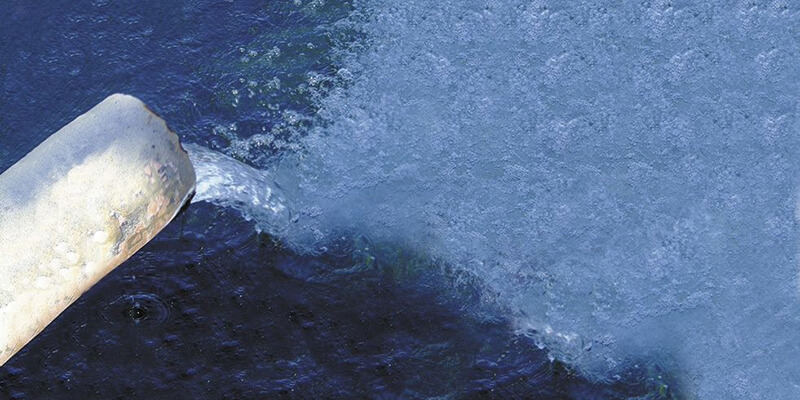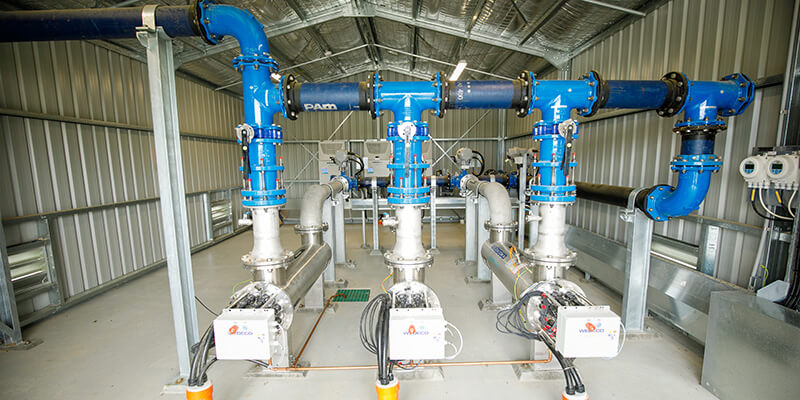Learning about water use behaviours in regional NSW
14 April 2025
Whether it be washing the dishes, brushing your teeth or hosing the garden, new research has lifted the lid on how regional NSW residents are using water in the home thanks to an innovative trial which provides helpful clues to improving efficiency for the future.
The $163,500 study, funded by the NSW Government, measured residential water consumption in over 500 households across Ballina, Bathurst and Dubbo Councils over a twelve-month period using cutting edge smart meters and artificial intelligence.
The work was carried out in close partnership with Griffith University using its state-of-the-art AI software Autoflow to pinpoint exactly how many litres of water are being used in the household for what purposes.
The 225 properties analysed in Dubbo used more water on average (663L per day) than their 286 counterparts in Bathurst (466L per day) and 70 homes in Ballina (459L per day), reflecting the drier climate that drives higher outdoor usage and potentially larger household sizes.
In Bathurst and Ballina, the shower and bath were the biggest water consumers, making up about 30 percent of total residential use or roughly 140 litres each day.
However, one of the consistent findings across the three local government areas is that many toilets have low efficiency and replacing them with more modern loos could lead to significant water savings across Dubbo, Bathurst and Ballina.
This improved understanding of consumption patterns will enable the NSW Government and local water utilities to make more informed water management decisions using existing resources throughout the year but particularly during times of peak demand and drought.
Learn more about the NSW Government’s Water Efficiency Program.
NSW DCCEEW Executive Director of Operations Resilience, Ashraf El-Sherbini said:
“This is the first time a study of this kind has been carried out in regional NSW using AI technology which is very exciting, providing us with new information that will help us to fine tune our local water planning and management.
“Traditional water meters need to have readings taken every few months, making it hard to understand what the water is being used for, but these high-tech smart meters can send information to local water utilities remotely in real-time which revolutionises the way we monitor water consumption.
“We picked Ballina, Bathurst, Dubbo to be part of the trial because they already had plenty of smart meters installed across homes and because they represent a good cross section of regional NSW from the central and western inland to the coast.
“The findings are interesting, in particular it appears many toilets are rated only 1 and 2 stars for water efficiency. That’s an area we could definitely zero-in on with all levels of government looking at encouraging and incentivising upgrades to improve water sustainability.
“This is a great example of how tapping into the latest technology can help us get the lay of the land when it comes to saving every last drop of water, enabling the most evidence-based decisions to boost drought resilience and get better outcomes for the community.”
Griffith University School of Engineering & Built Environment, Professor Rodney Stewart said:
“After trialling this study in metro areas, it’s great to see our super smart Artificial Intelligence being put through its paces out in the regions as well because we know water efficiency and security is front of mind for these communities.
“Smart meters on their own wouldn’t be able to produce this sort of data. It’s like having a Lamborghini without a driver. That’s where our software model comes in to identify water usage trends and patterns and then categorise it into different activities like toilet flushing, showering or clothes washing.
“It’s been fantastic to team up with the NSW Government on this project. We’re keen to build on its success and see how this new information can help shape regional water efficiency programs now and in the future.”
Other news

The NSW Government has taken decisive action to shore up water supply in Narrabri, committing an additional $4 million in funding to deliver critical new infrastructure for drinking water

The NSW Government has invested $17.8 million in a new sewage treatment plant for Gilgandra that will future-proof wastewater services for the town.
